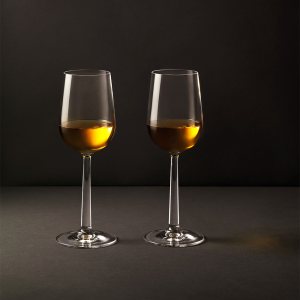With rare exception, no one goes wine tasting with the exclusive purpose of sipping dessert wines. Sure, that’s the idea if you’re going to Sauternes in France, and maybe in the Canada’s Niagara region, but that’s about it. On the other hand, almost everywhere in Wine Country, there will be winemakers who make a bit of sweet wine as a little extra.
In Australia, they call them “stickies”, and with good reason. In Italy, they make Vin Santo in Tuscany, Reciotto in Valpolicella and Passito in Sicily. Canada and upstate New York have their ice wines. Of course, there’s Port in Portugal. And in California, as you might expect, many wineries have a dessert wine available and they’re all very different. Among our favorites are Grgich Hills’ Violetta, Dry Creek Vineyards’ Soleil, and Beringer’s Nightingale.
There are a lot of different types of dessert wines. The best, in many people’s opinion, are the wines affected by the botrytis fungus that sucks almost all the moisture out of the grapes. The resulting shriveled fruit is very sweet and very concentrated. In Sauternes, it happens almost every year, but elsewhere it happens sometimes and sometimes not. Ice wines are made in climates where the grapes can freeze in late autumn. In warmer places, they just leave the grapes on the vines and produce late harvest wines. In our opinion, Port only comes from the Douro Valley in Portugal, but many others make a wine they call Port, made from Zinfandel and other white grapes.
Photo courtesy of Royal Design.
So wherever you travel, if you want to tickle your sweet tooth after drinking dry wine, here are some tips.
- Most of the time, you’ll have to ask. Many wineries don’t make dessert wines and of those that do, many keep them below the bar. After you’ve completed your allotted tastes of table wines, you can politely mention, “Do you make a dessert wine?”. Some visitors are shy about asking, especially if they have paid for, say, four tastes and they’ve had them all. Don’t worry about it. The mere fact that you knew enough to ask is enough to show a server that you care.
- Sip it like it’s the nectar of the gods. You’re often getting something extra so show your appreciation. They don’t call it dessert for nothing. Unless you buy some, you may never taste this wine again, so make every drop count.
- Drink these wines differently than you would a table wine. You’ll probably get a small glass with a small lip. Take just a little liquid in your mouth and roll each sip over your tongue. Let your sweet sensors do the work. Then remember you’re drinking wine and look for the complexities. It’s that complexity that makes the botrysized wines like Sauternes stand out from the others.
- Remember you’re drinking it young. Most wineries sell out their “stickies” very rapidly, usually to their club members. It is rare to find an older library dessert wine. Many change character as they age and some (not all) people like them better when they’ve gotten brown and mellow. You’ll be sipping honey and fruit juices and sugar. Enjoy it while you can.
